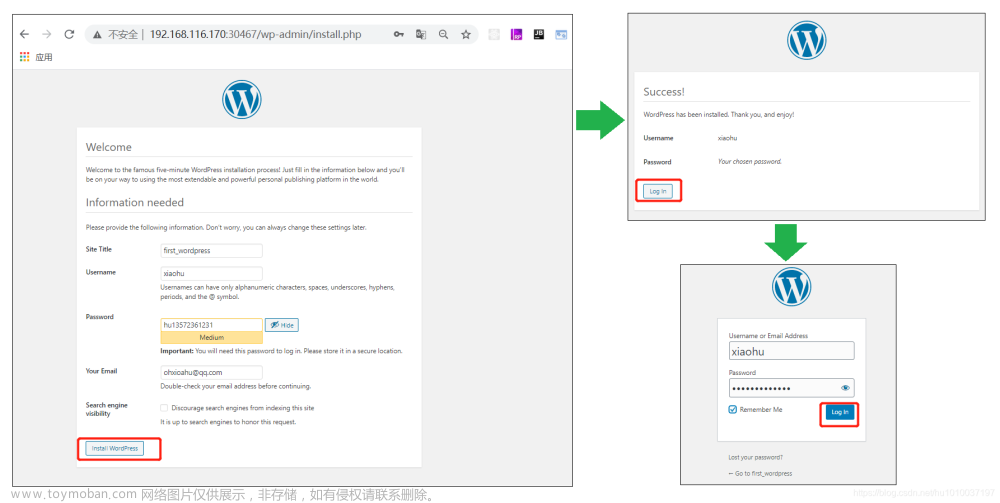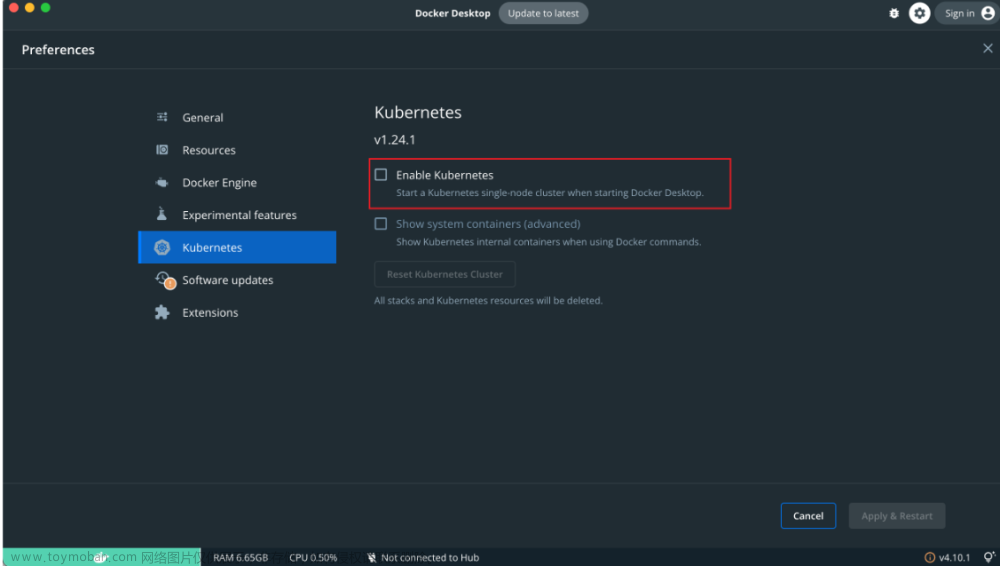摘要
在Kubernetes(K8s)中,Secrets是一种用于存储敏感数据的资源对象。它可以用于存储密码、API密钥、数据库凭证等敏感信息,以便在应用程序中使用。
设计实现说明如下:
- 加密存储:Kubernetes使用Base64编码将敏感数据加密存储在Secrets中。这意味着Secrets中存储的数据是经过编码的,但并不是加密的。因此,需要确保只有授权的用户可以访问Secrets对象。
- Secret类型:Kubernetes支持多种Secret类型,包括Generic、TLS、Docker Registry等。根据需要,可以选择适合的Secret类型进行存储。
- 创建Secrets:可以使用kubectl命令行工具或Kubernetes API创建Secrets对象。secret.yaml文件可以用于定义Secrets对象的配置。在配置文件中,需要指定Secrets的类型、名称和敏感数据。
- 使用Secrets:在应用程序中使用Secrets时,可以通过环境变量、卷挂载或直接在Pod的容器中引用Secrets。例如,可以通过在Pod配置文件中的spec.containers.env字段中指定环境变量来使用Secrets。具体的使用方式取决于应用程序的需求。
- 更新Secrets:当需要更新Secrets中的数据时,可以使用kubectl或Kubernetes API更新Secrets对象。只需更新配置文件中的敏感数据字段即可,Kubernetes将自动将其存储为新版本的Secrets,并确保已更新的Secrets在应用程序中生效。
- 访问控制:为了确保只有授权的用户可以访问Secrets,可以使用Kubernetes的访问控制机制进行限制。可以使用Role-Based Access Control(RBAC)或其他访问控制策略来限制对Secrets的访问权限。
- Secrets的复制和备份:为了确保数据的安全性,建议使用备份策略对Secrets进行定期的复制和备份。这样可以在数据丢失或发生故障时快速恢复。
总之,Kubernetes中的Secrets提供了一种安全存储敏感数据的方式,以便在应用程序中使用。通过遵循适当的访问控制措施和备份策略,可以有效保护和管理敏感数据。
Simply put
Secrets in Kubernetes (K8s) are a resource object designed to store sensitive data. They can be used to store passwords, API keys, database credentials, and other sensitive information for use within applications.
Here is an explanation of the design implementation of Secrets in K8s:
- Encrypted storage: Kubernetes uses Base64 encoding to store sensitive data in Secrets. This means that the data stored in Secrets is encoded but not encrypted. Therefore, it is important to ensure that only authorized users have access to the Secrets object.
- Secret types: Kubernetes supports multiple Secret types, including Generic, TLS, Docker Registry, etc. Depending on the requirements, the appropriate Secret type can be selected for storage.
- Creating Secrets: Secrets objects can be created using the kubectl command-line tool or the Kubernetes API. A secret.yaml file can be used to define the configuration of the Secrets object. In the configuration file, the Secret type, name, and sensitive data need to be specified.
- Using Secrets: When using Secrets in applications, they can be accessed through environment variables, volume mounts, or directly referenced in the container within the Pod. For example, Secrets can be used by specifying environment variables in the spec.containers.env field of the Pod configuration file. The specific usage depends on the requirements of the application.
- Updating Secrets: When there is a need to update the data in Secrets, they can be updated using kubectl or the Kubernetes API. Only the sensitive data field in the configuration file needs to be updated. Kubernetes will automatically store it as a new version of Secrets and ensure that the updated Secrets take effect in the application.
- Access control: To ensure that only authorized users can access Secrets, Kubernetes provides access control mechanisms. Role-Based Access Control (RBAC) or other access control policies can be used to restrict access to Secrets.
- Replication and backups: To ensure data security, it is recommended to have a backup strategy for regularly replicating and backing up Secrets. This helps in quickly recovering from data loss or failures.
In summary, Secrets in Kubernetes offer a secure way to store sensitive data for use within applications. By following appropriate access control measures and backup strategies, sensitive data can be effectively protected and managed.
Example
在Kubernetes上使用Secrets可以用来存储敏感数据,如密码、API密钥或证书等。它可以以安全的方式传递给容器,而不需要将敏感数据硬编码在镜像中。
下面是一个在Kubernetes上使用Secrets的示例:
- 创建一个Secret对象:
apiVersion: v1
kind: Secret
metadata:
name: my-secret
type: Opaque
data:
password: cGFzc3dvcmQ= # 这里是Base64编码的密码,可以使用命令行工具进行编码
- 使用kubectl命令将Secret对象部署到Kubernetes集群:
kubectl apply -f secret.yaml
- 在Pod的配置文件中引用Secret:
apiVersion: v1
kind: Pod
metadata:
name: my-pod
spec:
containers:
- name: my-container
image: my-image
env:
- name: PASSWORD
valueFrom:
secretKeyRef:
name: my-secret
key: password
在上面的示例中,创建了一个名为my-secret的Secret对象,并将一个名为password的密钥和相应的Base64编码密码关联起来。然后,在Pod配置文件中,通过引用Secret的名称和密钥,将密码作为环境变量传递给容器。
这样,容器就可以通过读取环境变量PASSWORD来获取密码,而无需在Pod的配置文件中直接暴露密码。
注意:Secrets在Kubernetes中是以Base64编码存储的,所以需要确保在使用Secrets时进行相应的解码操作。另外,需要注意保护好Secrets,以免敏感数据泄漏。
On the other hand
The Enigma Within the Kubernetes Cluster
Chapter 1: The Discovery
In a distant future where technology has reached unimaginable heights, a team of scientists embarks on a groundbreaking mission to explore the secrets of Kubernetes (K8s). Little did they know, their journey would lead them to unforeseen challenges and a series of mind-boggling discoveries.
Dr. Sophia Gardner, a brilliant computer scientist, was chosen to head the mission. Along with her team of skilled engineers, they set sail on their spacecraft, traversing the vast expanse of space towards an unknown destination. Their objective was to unlock the secrets hidden within the enigmatic Kubernetes system.
Chapter 2: The Quantum Conundrum
As they reached their destination, the team found themselves in a colossal floating cluster named “Kube-Prime”. This mysterious structure defied all laws of physics, seemingly suspended in a time-warping fold of space. Dr. Gardner’s team quickly realized they had stumbled upon the key to unlocking a technological marvel.
Within Kube-Prime, they uncovered a quantum-powered network that controlled the fabric of the universe itself. The implications of this revelation were immense. It became evident that K8s was not just a tool for managing containerized applications but held the power to alter reality itself.
Chapter 3: The Forbidden Knowledge
As they delved deeper into the mysteries of Kube-Prime, the team soon discovered an ancient alien civilization had designed and constructed the cluster eons ago. It appeared that these enigmatic beings had harnessed the infinite potential of Kubernetes for their own advancement.
The scientists found encrypted documentation, detailing the forbidden knowledge that had been concealed for millennia. It held secrets of immortality, inter-dimensional travel, and the ability to manipulate time. However, these powers came with a price — potentially catastrophic consequences that could unravel the very fabric of existence.
Chapter 4: The Moral Dilemma
Dr. Gardner and her team now faced a moral dilemma. Should they pursue the unimaginable power that lay within Kube-Prime, or should they protect the fragile balance of the universe? The temptation to grasp these forbidden technologies was overwhelming, yet the potential risks weighed heavily on their conscience.
Chapter 5: The Final Revelation
After much contemplation, Dr. Gardner decided that tampering with the unknown was a dangerous path. Recognizing the responsibility that came with their discovery, she resolved to bury the secrets of Kube-Prime and any knowledge that could disrupt the delicate equilibrium of the universe.
Dr. Gardner’s team deactivated the cluster, erasing all traces of the alien technology. With heavy hearts, they returned to Earth, vowing to keep the secret of Kube-Prime buried forever. They understood that some secrets were not meant to be revealed, preserving the very essence of humanity.
Epilogue文章来源:https://www.toymoban.com/news/detail-703060.html
In the end, the enigma within Kubernetes remained an intriguing mystery. It served as a poignant reminder that even in the most technologically advanced society, there were secrets best left undisturbed. The universe continued to unfold, enveloping new civilizations, each holding their own secrets, waiting to be discovered and understood in due time.文章来源地址https://www.toymoban.com/news/detail-703060.html
到了这里,关于Secrets in Kubernetes (K8s)的文章就介绍完了。如果您还想了解更多内容,请在右上角搜索TOY模板网以前的文章或继续浏览下面的相关文章,希望大家以后多多支持TOY模板网!












